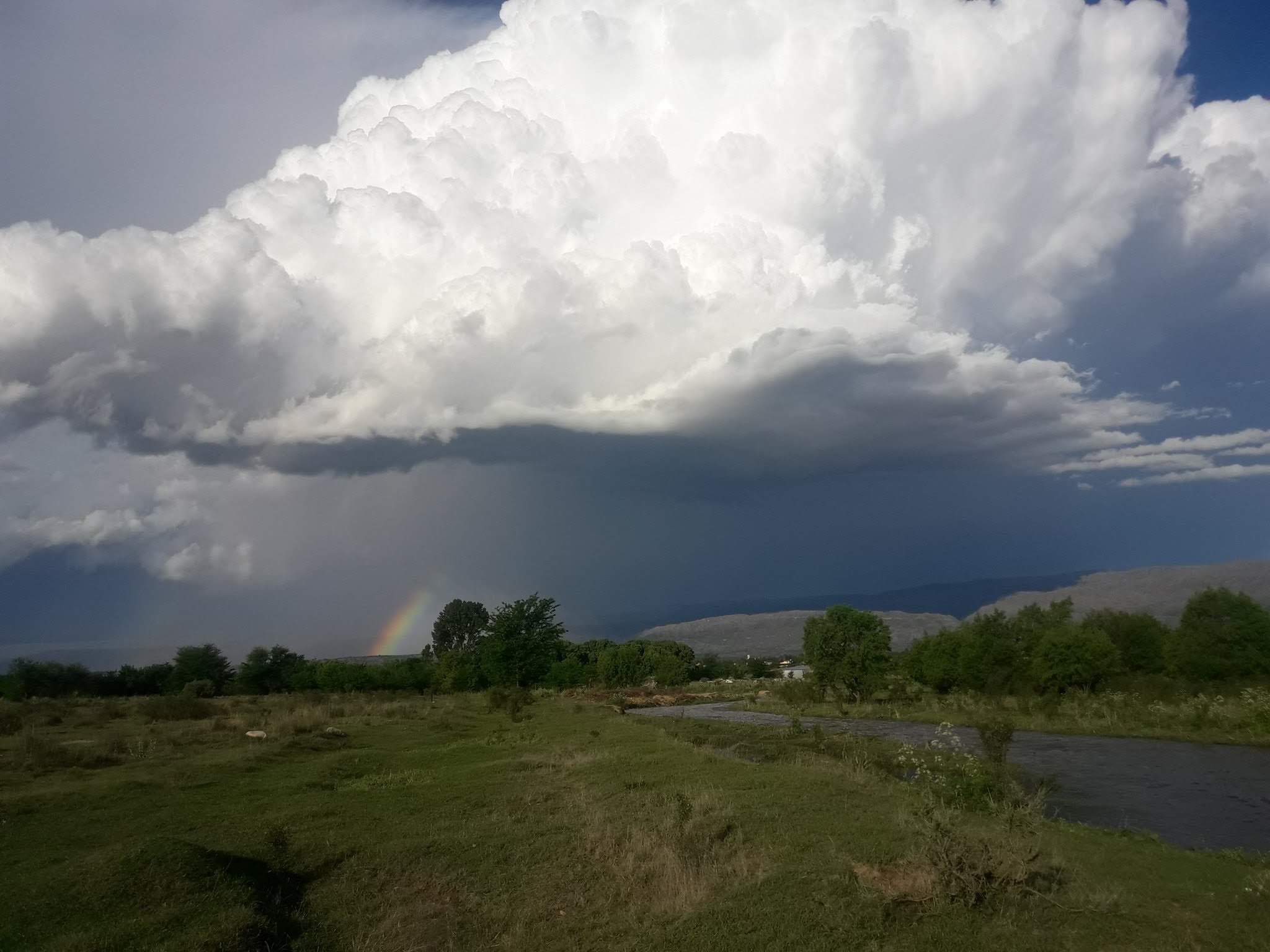As a Colorado State University Ph.D. student in atmospheric science, Alexandra Naegele spends most of her days in front of a computer, using models to study clouds, precipitation and atmospheric energy.
For three weeks in November, Naegele left that familiar setting for something wildly different. She was one of 16 graduate students across the U.S. who participated in an intensive, international scientific field campaign in Argentina, observing that region’s famous severe thunderstorms.
Naegele was joined by fellow CSU graduate student Jeremiah Otero Piersante and peers from other institutions in the National Science Foundation-supported International Research Experience for Students Advanced Study Institute: Field Studies of Convection in Argentina. The program was a student-focused, intensive crash course in atmospheric science field work and research held in conjunction with a $30 million, NSF-supported field campaign co-led by CSU faculty.
The overall field campaign, RELAMPAGO, wrapped in December and was the largest land-based atmospheric sciences field study ever conducted outside the United States. RELAMPAGO brought together the expertise of several universities and agencies to discover why thunderstorms in subtropical South America are among the most extreme in the world, regularly producing golf ball or grapefruit-sized hail.
First field experience
Joining the multi-agency, multi-institutional scientific effort were U.S. graduate students from diverse backgrounds and institutions selected for the Advanced Study Institute. None of the students had ever participated in a major field campaign prior to the program; many, like Naegele, work primarily on model-based research projects. The first of its kind at CSU, the program gave these students the experience of conducting research for a real scientific mission. Learning in the field from expert mentors, they also contributed to data-gathering and other day-to-day responsibilities.
The highly competitive institute brought in students from Penn State, Montana State University, Louisiana State University, Mississippi State University, and San Jose State University, among others. They were joined by students from Argentina and Brazil.
Assistant Professor Kristen Rasmussen, a faculty member in the CSU Department of Atmospheric Science and a principal investigator of RELAMPAGO, led the Advanced Study Institute and was primarily responsible for its organization and execution. Research Scientist Melissa Burt served as the institute’s assistant director, playing a key role in its success. The institute also was enhanced by a partnership with the National Center for Atmospheric Research education and outreach division. The students not only contributed to field work, but also attended scientific and professional development lectures and engaged in outreach events as part of the institute.
“Providing these excellent students the opportunity to participate in a large field campaign, and really learn the ins and outs of field work, was an integral part of our journey to Argentina,” Rasmussen said. “These students are our future leaders, and our goal with the Advanced Study Institute was to provide direct hands-on field campaign experiences that will enable their continued pursuit of knowledge through their research. My own career as a scientist was shaped by my participation in a field campaign, so I wanted to share this experience with others.”
Piersante, a first-year graduate student supervised by Rasmussen and Associate Professor Russ Schumacher, said he enjoyed the opportunity to interact with “big names whose papers I had read,” as well as graduate students from all over the U.S. and world.
“It was so different from my every day,” added Naegele, who is working toward her Ph.D. with University Distinguished Professor David Randall in the Department of Atmospheric Science. “It was interesting seeing how all these different universities and different people come together for a common purpose.”

The RELAMPAGO Advanced Study Institute team.
Chasing storms
Naegele and Piersante were both assigned to the “MesoNet” team, working primarily with mentors from the Center for Severe Weather Research in Boulder. Their instrumentation included three mobile weather stations on pickup trucks, in addition to three Doppler on Wheels mobile radars that are designed to move quickly between locations. The team’s activities included setting up mobile weather stations as well as launching soundings, or weather balloons, to track humidity, winds, temperature and other data as storms developed and evolved.
Naegele had never launched a weather balloon in her life – and she had to learn quickly.
“The first few launches, you’re pretty clueless, but after that you’re a pro,” she said. “There’s a steep learning curve, and the pressure is high.”
Naegele, Piersante and the rest of the MesoNet team took data during six operational days, in which they spent long days in the field sampling thunderstorms.
“We’d have days where I’d set an alarm for 2 a.m., and we’d leave at 5 a.m.,” Piersante said. “Many decisions had to be made at the last minute – but such is the nature of field campaigns.”

One of several storms the researchers observed while in Argentina for the RELAMPAGO campaign.